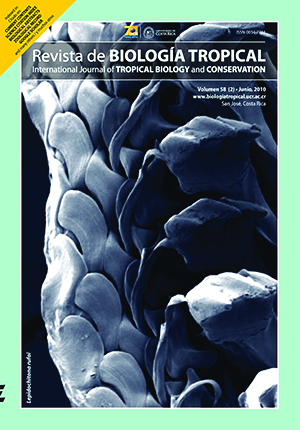Abstract
The main goal of this research was to obtain baseline field data of the composition of sponges, corals, and gorgonian assemblages that can be used as a reference for future analyses of anthropogenic impact. We tested the hypothesis that relatively homogeneous and well preserved reef units can present notable natural variability in the composition of their communities which are unassociated with changes in land proximity or a human impact gradient. Research was carried out in July 2006 at Los Colorados reef, located in the northwestern region of Pinar del Río Province, Cuba at 12 sampling stations. The biotopes selected were crest, terrace edge and spur and grove. Ecological indicators were diversity of corals, species composition, density of corals, hydrocorals, gorgonians and sponges, and density of selected coral species. A total of 2659 colonies of scleractineans corals representing 36 species were counted. The most abundant species in the crest biotope were Millepora alcicornis, Acropora palmata and Porites astreoides; in the terrace edge and spur and grove, the most abundant species were Siderastrea siderea, Stephanocoenia intersepta, Porites astreoides, Agaricia agaricites and Montastraea cavernosa. We found differences among sites for several indicators (e.g. density of corals, sponges and gorgonians and for selected species), but they could not be associated to any gradient of land influence or human impact. Therefore, sites inside a relatively homogeneous reef unit can present notable natural differences in the composition of their communities.Comments

This work is licensed under a Creative Commons Attribution 4.0 International License.
Copyright (c) 2010 Revista de Biología Tropical
Downloads
Download data is not yet available.






